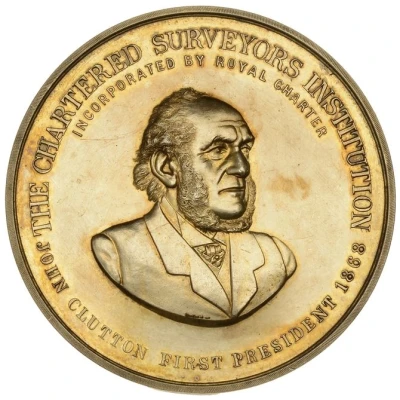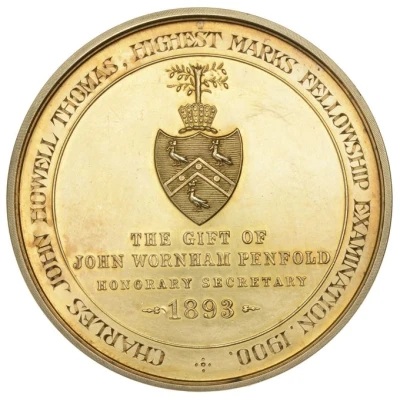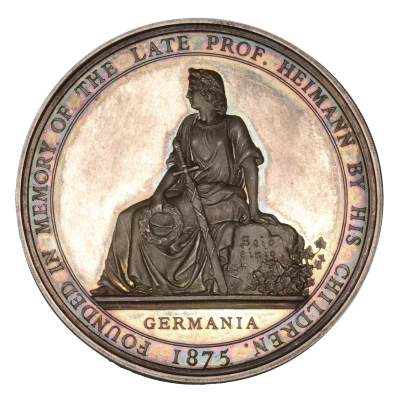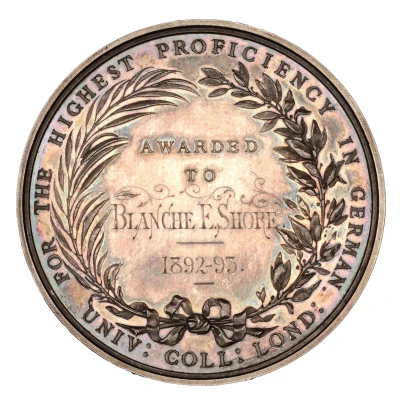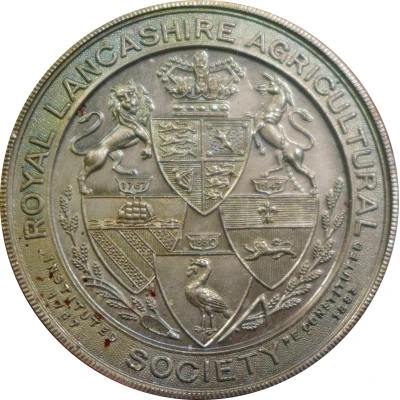
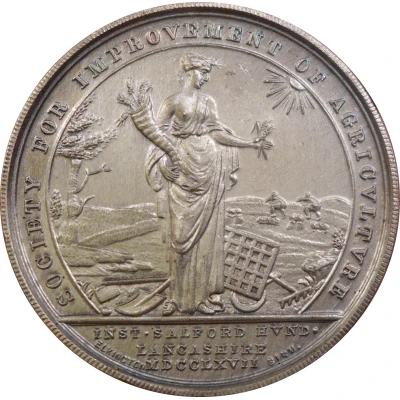

© ZacUK
Medal - Royal Lancashire Agricultural Society
1893 year| Silver plated bronze | - | 38 mm |
| Location | United Kingdom (United Kingdom, British Overseas Territories and Crown Dependencies) |
|---|---|
| Queen | Victoria (1837-1901) |
| Type | Award medals › Agricultural and industrial awards |
| Year | 1893 |
| Composition | Silver plated bronze |
| Diameter | 38 mm |
| Thickness | 3 mm |
| Shape | Round |
| Technique | Milled |
| Orientation | Medal alignment ↑↑ |
| Updated | 2024-11-14 |
| Numista | N#133374 |
|---|---|
| Rarity index | 97% |
Reverse
Inner circle containing the goddess Ceres standing holding a cornucopia and ears of wheat in rural landscape, and sun top right. Lettering around
Script: Latin
Lettering:
SOCIETY FOR IMPROVEMENT OF AGRICVLTVRE
INST · SALFORD · HVND · LANCASHIRE
MDCCLXVII
ELKINGTON BIRM.
Translation: 1,000 + 500 + 200 + 50 + 10 + 5 + 2 = 1767
Edge
Plain
Comment
Unmarked, probably silver on bronze.The Royal Lancashire Show (RLS) is an agricultural show which takes place every year at different locations throughout the historical county boundaries of Lancashire in North England. The show is organised by the Royal Lancashire Agricultural Society (RLAS) and is one of Britain's oldest agricultural shows, first taking place in 1767.
The roots of the Royal Lancashire Agricultural Society go back to a meeting of landed proprietors at the Old Coffee Tavern, Salford, in 1767, to discuss forming an agricultural society for the Eastern District of Lancashire. The most influential supporters were Wilbraham Egerton, of Tatton, the Earl of Derby and the Duke of Bridgewater. A Liverpool Society started in 1830, again through the influence of the Earl of Derby, and in 1847 he expressed a wish for the societies in the north of the county to combine, and so the Royal North Lancashire Agricultural Society was born, which eventually absorbed the Liverpool and Manchester societies to form the Royal Lancashire.
Made and issued by Elkington and Co. and with a presentation case.
The details of the winner are usually inscribed on the rim of the medallion. Issued also in silver (diameter 46mm), or 22 grammes of 9 carat gold (diameter 48mm).
In ancient Roman religion, Ceres was a goddess of agriculture, grain crops, fertility and motherly relationships.
